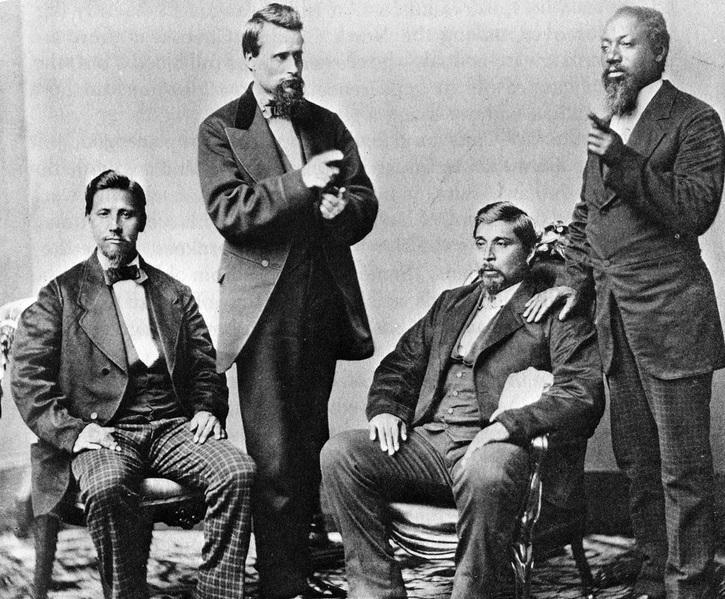Native Authenticity: Questioning Blood Quantum Beliefs

One prominent challenge to the self-determination of modern Native American identity is the idea that "real" or "authentic" Native Americans ought to have mostly Native ethnic and biological ancestry.
History: The stereotype that more Native ancestry correlates to more Native authenticity stems from historical blood quantum laws. Blood quantum laws were not originally an Indian construction, but rather a Euro-American construction that has been adopted into tribal affairs.
•1705 Virginia colony: Blood quantum laws restricted the rights of Native American individuals who had half or more Native ancestry, or "half-bloods" to "full-bloods" (Forbes).
•Dawes Act: Native American individuals were identified according to the fraction of their Native ancestry. This record of ancestry in the Dawes Act enabled the later uses of genealogy-based identity.
•Indian Reorganization Act of 1934: tribes had to use blood-quantum laws in their constitutions to define tribal membership (Spruhan). This point marks the transition of blood-quantum laws from the purely racist Euro-American emphasis to an issue of Native sovereignty, using ancestry to preserve cultural purity and strength.
Evidence: The normalization of basing Native authenticity on ancestry is alive today as a racist public stereotype. The evidence can easily be found:
•A forum poster on a social networking site blatantly assumes that a "real Indian" ought to be a "full-blood" (City-Data).
Cherokee author of Native studies Adrienne K. recounts an anecdote displaying the acceptance that Native Americans are defined as "real" and "verifiable" only if they are full-blooded (Adrienne K.). This stereotype continues the undertone that authentic Native Americans no longer exist.
Responses: There several mediums by which Native Americans respond and counter stereotype and tribal policies that are dictated by the correlation of Native identity and Native ancestry: the internet and the arts.
The internet has provided Native American authors with a public platform to originate, reiterate and share their thoughts about blood quantum history, stereotypes and laws.
•Kim Tallbear, a member of the Sisseton-Wahpeton Oyate tribe and a professor of Native studies at UC Berkeley, points out that Native identities and tribal affiliations work similarly to other cultures or nations: biological ancestry does not dictate cultural belonging (Latour).
•Jesse Taken Alive, a Standing Rock councilman, would rather focus on culture and "a way of life.” For those invested and interested in acquiring tribal life, education of tribal language and history might be a more humane and culturally progressive method of accepting new members instead of stone-cold numbers (Adams). Clearly, Native Americans are publicly asserting that the definition of what makes a Native American "real" and "authentic" is more complex than simply establishing a certain amount of Native ancestry.
Native American artists also use their craft to symbolically create messages questioning the validity of blood quotas.
•A Chickasaw artist Kristen Dorsey has created earrings shaped like drops (bottom left), which represent the blood of ancestry and tears of sorrow shed over the issue of Native American identity (Metcalfe). These earrings each have a unique digit, and together the numbers create fraction to represent the fractions of Native ancestry used by governments to identify "how much" Native American ancestry is in a person. Dorsey's intention with this unique work is to give anyone the power to display and question the issue of limiting Native identity with blood quantum laws.
• James Luna, a tribal Luiseno/Diegueno and Mexican-American artist, has piece showing the binary stereotypical looks of both his Native American and Mexican heritages (bottom right, Museum of Contemporary Art, San Diego). He created this piece to question how identity is a complicated matter, and cannot be known based on physical appearances or stereotypes.

